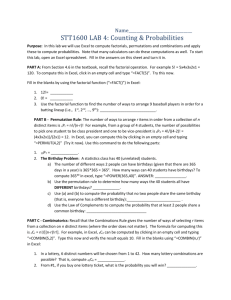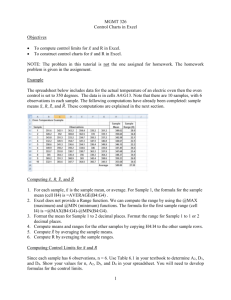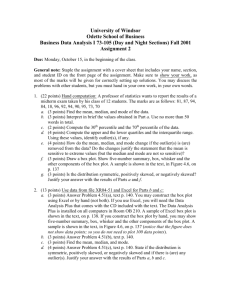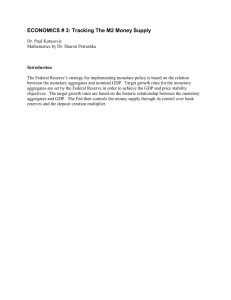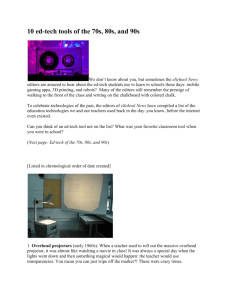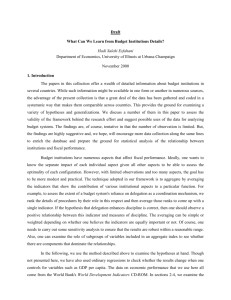Probability: What Affects Estimates
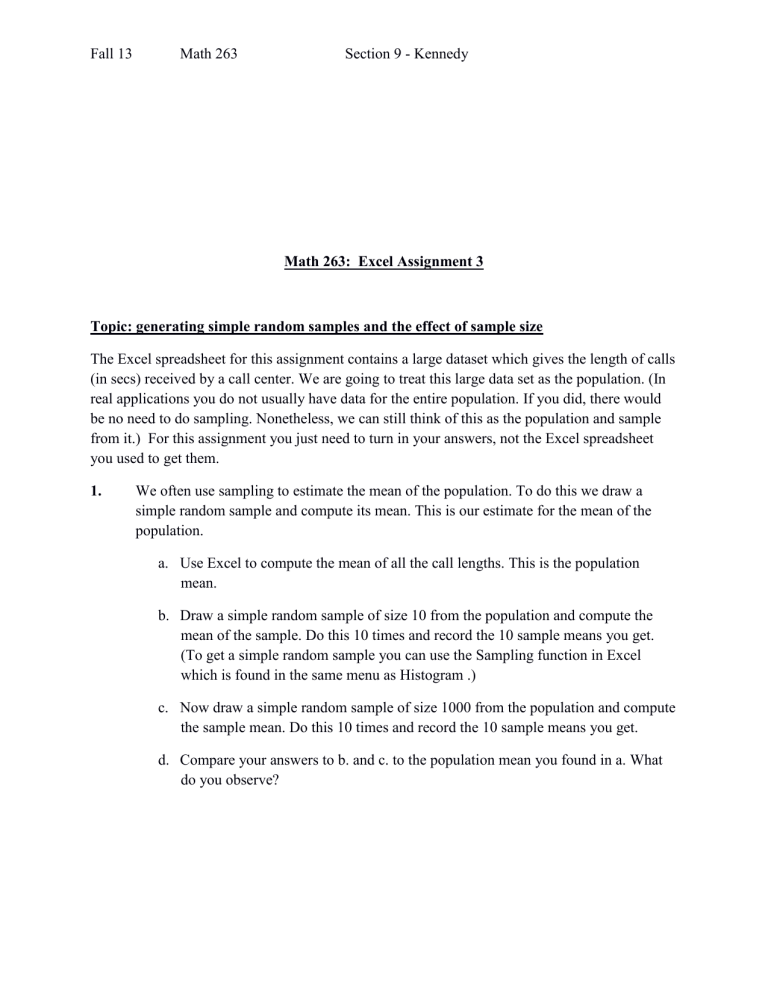
Fall 13 Math 263 Section 9 - Kennedy
Math 263: Excel Assignment 3
Topic: generating simple random samples and the effect of sample size
The Excel spreadsheet for this assignment contains a large dataset which gives the length of calls
(in secs) received by a call center. We are going to treat this large data set as the population. (In real applications you do not usually have data for the entire population. If you did, there would be no need to do sampling. Nonetheless, we can still think of this as the population and sample from it.) For this assignment you just need to turn in your answers, not the Excel spreadsheet you used to get them.
1.
We often use sampling to estimate the mean of the population. To do this we draw a simple random sample and compute its mean. This is our estimate for the mean of the population. a.
Use Excel to compute the mean of all the call lengths. This is the population mean. b.
Draw a simple random sample of size 10 from the population and compute the mean of the sample. Do this 10 times and record the 10 sample means you get.
(To get a simple random sample you can use the Sampling function in Excel which is found in the same menu as Histogram .) c.
Now draw a simple random sample of size 1000 from the population and compute the sample mean. Do this 10 times and record the 10 sample means you get. d.
Compare your answers to b. and c. to the population mean you found in a. What do you observe?
Fall 13 Math 263 Section 9 - Kennedy
2.
Next we want to look at the fraction of the calls that are longer than 90 secs. a.
Compute the probability that a randomly chosen call from the population will be longer than 90s by counting the number of calls in the dataset that are longer than
90s and dividing by the total number of calls. (The COUNTIF function is useful for this.) b.
Draw 10 simple random samples with 10 calls in each sample and compute the fraction of calls in each sample that are longer than 90s. (You can use the 10 samples you found before if you want.) c.
Now draw 10 simple random samples with 1000 calls in each sample and compute the fraction of calls in each sample that are longer than 90s. (You can reuse the samples from question 1). d.
Compare your answers to b. and c. to the exact probability you found in part a. and comment on what you observe.
